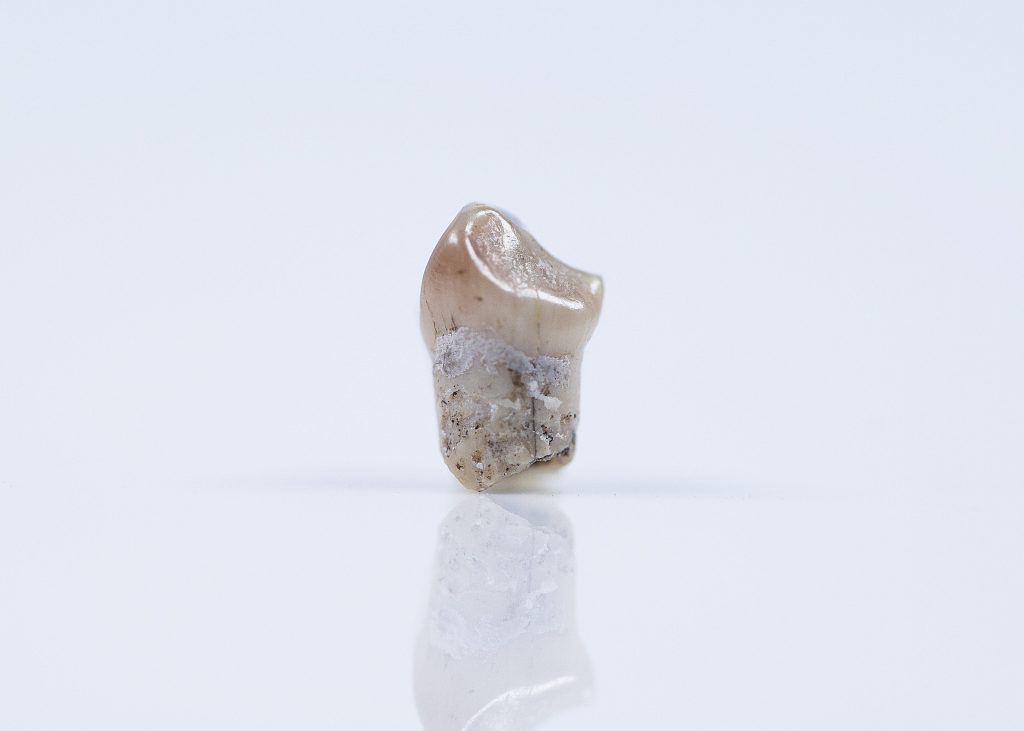New Discovery Expands the Hobbit Family Tree

Over 60,000 years ago, small, mysterious hominins, no taller than 3 1/2 feet and wielding simple stone tools, once lived on the island of Flores in Indonesia. Now, new evidence reveals that even smaller bipeds called the island home hundreds of thousands of years earlier. A scrap of jaw that could fit in the palm of your hand and a handful of minuscule teeth, dating to around 700,000 years ago, were recently unearthed from a site called Mata Menge in central Flores.
This paleontological bombshell lands today in two papers in the journal Nature, the first describing their discovery and the second dating them and reconstructing their context. Ripples and responses will no doubt last for years. The finding opens new questions about the family tree of hominins while finally settling the debate over whether the original fossils were from individuals with some kind of illness or syndrome.
Homo floresiensis, the species designation given to fossils found in a cave on Flores in 2003 (quickly and firmly dubbed “hobbits” by the press), shared their island home with crocodiles, Komodo dragons, and giant rats—but also with relatives of the elephant that had, over time, shrunk to survive in a world of limited resources in a process ecologists call “island dwarfism.” Homo floresiensis was thought to have had a similar trajectory. But some thought the bones were pathological outliers. No more.
“It removes any question that it is a pathological Homo sapiens,” says evolutionary anthropologist Dean Falk of Florida State University, who has been playing a bleak kind of academic badminton against various medical Homo floresiensis theories for years, from microcephaly to Down syndrome. “I think that is done,” she says, with relief in her voice. “I thought for a long time that the ‘sick hobbit’ hypothesis is just not viable.”
Despite being hundreds of thousands of years older, the new specimens seem to come from individuals even more petite than the first fossils; the jaw, identifiable as adult from the erupted wisdom teeth, is 28 percent smaller.
Debbie Argue of Australian National University in Canberra, who was not involved with the present study but has a deep familiarity with the original Homo floresiensis fossils, says the hominins that the newly discovered bones come from might have been just 2 1/2 feet tall as adults. “Two foot six, adult! It is just very interesting,” she says.
Despite her enthusiasm about the finding, Argue disagrees with the studies’ authors about the probable lineage of the new fossils. The authors of the Nature papers see the new bones as displaying “characteristics that point to a Homo erectus ancestry” and as either older Homo floresiensis or a species directly ancestral to Homo floresiensis, says lead author Gerrit van den Bergh, a paleontologist at the University of Wollongong, New South Wales, Australia. But Argue says the jaw lacks bony features that are present in both older human ancestors like Australopithecus and the younger 50,000-year-old Homo floresiensis. For her, this disrupts that straightforward story.
Everyone involved in the field affirms, with almost giddy enthusiasm, the promise of future discovery. More findings of little fossils will help put these extraordinary hominins in their rightful place on the tree of life. And these new, older, tinier hominins are just making things more complex and interesting.
“When Homo floresiensis was discovered it caused a huge interest all over the world because nothing like that had ever happened,” Argue says. “I think that nothing like this has ever happened.”
































